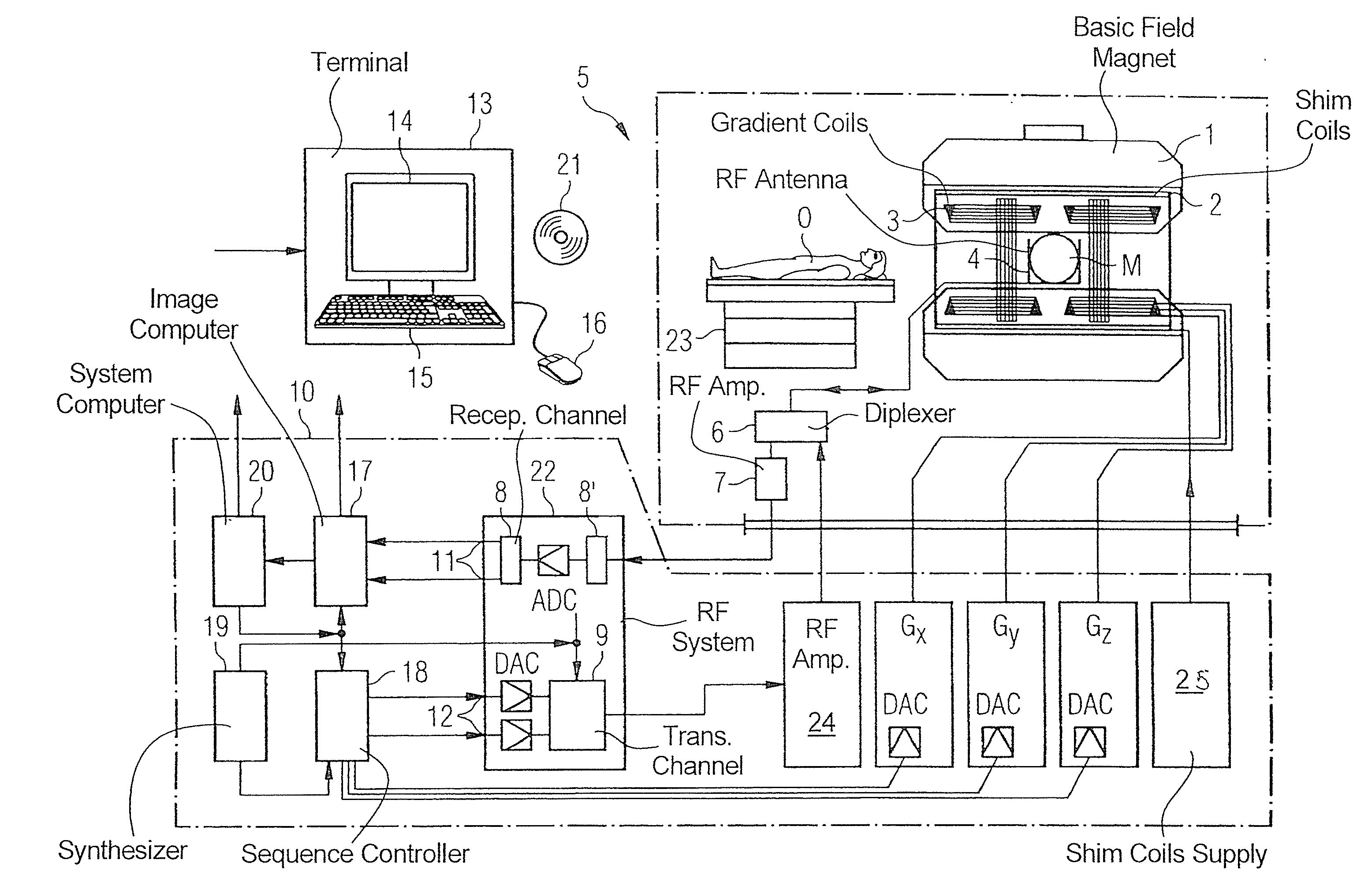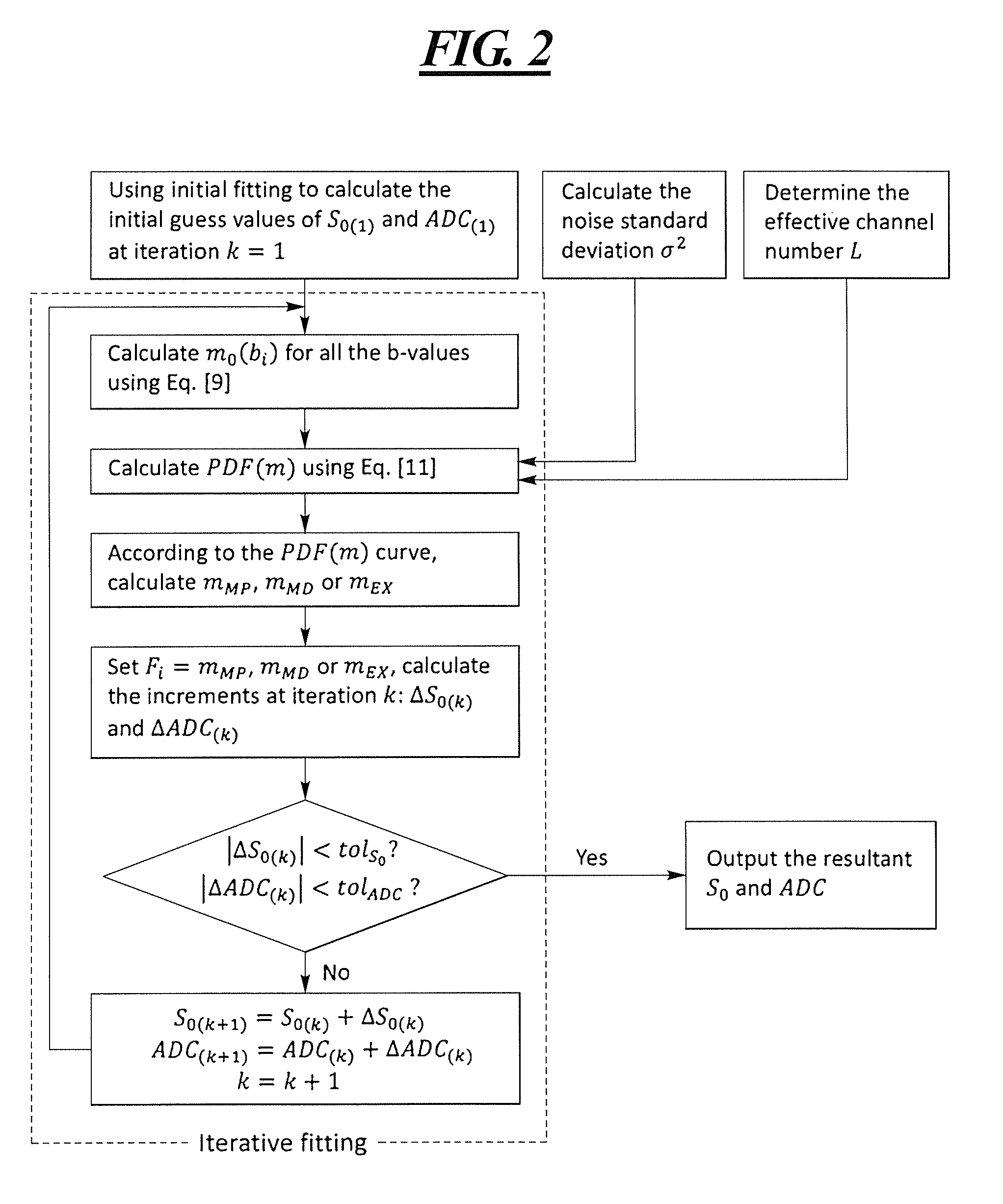Method and apparatus to correct noise effects in quantitative techniques in magnetic resonance imaging
a quantitative technique and noise effect technology, applied in the field of methods and apparatuses for magnetic resonance imaging, can solve the problems of low snr and errors in the resultant adc map, and achieve the effect of accurate estimation and correcting the noise
- Summary
- Abstract
- Description
- Claims
- Application Information
AI Technical Summary
Benefits of technology
Problems solved by technology
Method used
Image
Examples
example preliminary
Results
[0049]Compared to the results of the commonly used LL algorithm, exemplary results of the inventive method are shown in FIG. 3 designated with MP, where mMP was used to account for the noise of high b-value images. It is noted that MP provides a more uniform, less noisy ADC map than the commonly used LL method for the example case shown here. Finer details such as vessels in the liver can be seen on the ADC maps generated using the MP method, but not on the ADC maps generated using the LL method. Quantitatively, MP can improve the robustness of ADC calculation (reduced std; smaller variation using results from most b-values as reference), especially in the liver region.
[0050]FIG. 3 show examples of resultant ADC maps for each diffusion weighting direction and the ADCtrace map. The DW data were acquired with 3 diffusion weighting directions, with b=50, 400, 800, 1200, 2000, 400, 800, 1200, 2000, 800, 1200, 2000, 1200, 2000, 2000 s / mm2 for each acquisition, respectively. The ba...
PUM
 Login to View More
Login to View More Abstract
Description
Claims
Application Information
 Login to View More
Login to View More - R&D
- Intellectual Property
- Life Sciences
- Materials
- Tech Scout
- Unparalleled Data Quality
- Higher Quality Content
- 60% Fewer Hallucinations
Browse by: Latest US Patents, China's latest patents, Technical Efficacy Thesaurus, Application Domain, Technology Topic, Popular Technical Reports.
© 2025 PatSnap. All rights reserved.Legal|Privacy policy|Modern Slavery Act Transparency Statement|Sitemap|About US| Contact US: help@patsnap.com



